“In a global public health and economic crisis such as the one we are facing, it is only humane to treat everyone, regardless of nationality and social class, with care and dignity. Migrant workers deserve protection by the simple virtue that they are human and basic protection should be part of their human rights. “, writes Tan Theng Theng, an independent researcher, and Jarud Romadan, a researcher at Khazanah Research Institute.
_______________________________________________
The plight of migrant workers in many countries has been in the spotlight during the Covid-19 pandemic. Owing to their low income, precarious jobs and poor living conditions, migrant workers have become one of the most vulnerable populations amidst the pandemic. To date, many are still locked down, unemployed, and even living in fear of infection.
Migrant workers in Malaysia are no exception. In Malaysia, there are at least two million migrant workers mostly from Indonesia and Bangladesh, making up 15% of the total employed persons (DOSM, 2020; MOHA, 2019). Since Malaysia went into lockdown in March 2020, the Malaysian Trades Union Congress (MTUC) has reported cases of violation of migrant workers’ rights by their employers, including unfair termination, unpaid wages, poor living conditions and more. Those who were laid off would have lost their work passes, forcing them to become undocumented and hence face the fear of being arrested. Since May 2020, the Malaysian government has conducted several immigration raids, detaining more than 18,000 undocumented migrant workers in the name of reducing the spread of Covid-19. Many became infected as the over-crowded detention centres became coronavirus hotspots, while others who were tested negative for Covid-19 were repatriated. Even then, these cases are likely just the tip of the iceberg—without any official account, the fate of other undocumented migrant workers remains largely unknown.
Perhaps unsurprisingly, the Malaysian government has arguably provided only limited assistance to the migrant population. So far, one of the most prominent government initiatives related to the workers is the 25% cut for the migrant worker levy for the rest of the year, which unfortunately is unlikely to be of significant help for firms given its small quantum. Even after the movement restrictions were gradually lifted, the government has repeatedly urged employers to prioritise locals in their hiring practices as part of the measure to alleviate soaring unemployment among Malaysians. Not only so, this policy has also been justified to wean off Malaysia’s reliance on low-wage migrant workers to encourage automation in the long run.
In a global public health and economic crisis such as the one we are facing, it is only humane to treat everyone, regardless of nationality and social class, with care and dignity. Migrant workers deserve protection by the simple virtue that they are human and basic protection should be part of their human rights. Unfortunately, human rights arguments often fall on deaf ears with many still calling for governments to prioritise citizens over migrants.
However, even from a purely economic perspective, the “citizens’ welfare-comes-first” ideology must give way to an inclusive protection measure. Although some may argue that given limited resources, governments have an obligation to prioritise its citizens over migrants, there are several strong economic arguments against the marginalisation of migrant workers.
Economic externalities – Neglecting migrant workers hurts locals, too
Firstly, marginalising migrant workers incurs significant spill-over effects on the survival of firms. Malaysia’s economy has long been heavily reliant on the migrant workforce. In 2019, migrant workers made up more than 30% of the workforce in the agriculture sector, and more than 20% in both the construction and manufacturing sectors (Figure 1). Almost half of the low-skilled workers in Malaysia were of foreign origins. For semi-skilled jobs, where the bulk of jobs are, more than one in 10 were migrant workers. Overall, it has been estimated that 22% of the establishments in Malaysia hired migrant workers (MOHR, 2019).

Figure 1: Migrant workers are important to Malaysia’s economy. Migrant workers made up a large proportion of workers in different sectors and among the low-skills workers. DOSM (2011); DOSM (2015); DOSM (2020) and author’s calculations
As such, without adequate support given to keep these migrant workers in jobs, Malaysia would effectively be unplugging its economy’s access to a large swathe of the labour force. This could serve as an extra blow to businesses that are already grappling with the economic consequences of the pandemic. As firms struggle to stay afloat, this could further complicate the effort to reduce unemployment.
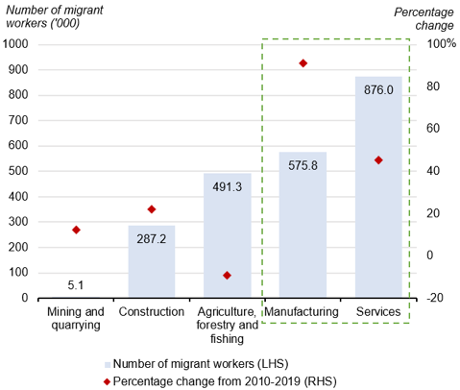
Figure 2: The importance of migrant workers in the manufacturing and services sector. Both sectors have the largest and fastest-growing number of migrant workers between 2010 and 2019. DOSM (2011); DOSM (2015); DOSM (2020) and author’s calculations.
In July 2020, the Malaysian government announced that migrant workers are limited to working only in the agriculture, plantation and construction sectors, as part of its strategy to keep Malaysians employed. Whilst the reason for the ban in the manufacturing and services sectors is unclear, its implications on both sectors are unlikely to be trivial.
Despite their relatively low share of migrant workers, the manufacturing and services sectors actually hired the largest number of migrant workforce, totalling almost 1.5 million persons (Figure 2). In fact, the number of migrant workers employed in both sectors is the fastest-growing ever since 2010. Furthermore, the manufacturing sector also recorded one of the highest percentages of establishments (63%) that employed migrant workers in 2018 (MOHR, 2019). Altogether, these signal the sectors’ rapidly rising dependence on migrant workers in recent years. It follows that to protect these sectors is to protect the migrant workers who make up a significant portion of their labour force as well.
Imperfect substitutes – The difference between migrant and local workers
Secondly, the idea that without migrant workers, firms can easily hire locals to replace them misses an important fact—migrant and local workers are generally imperfect substitutes. Between 2010 and 2019, most of the migrant workers who entered the labour market had at most a secondary education (Figure 3). By contrast, the Malaysian labour force is getting more educated—there have been fewer people with only primary education or less, and nearly two million more who are tertiary-educated. This partly explains why within the same decade, most migrant workers tended to go into low-skilled jobs, whereas Malaysians were mostly hired in skilled and semi-skilled occupations.
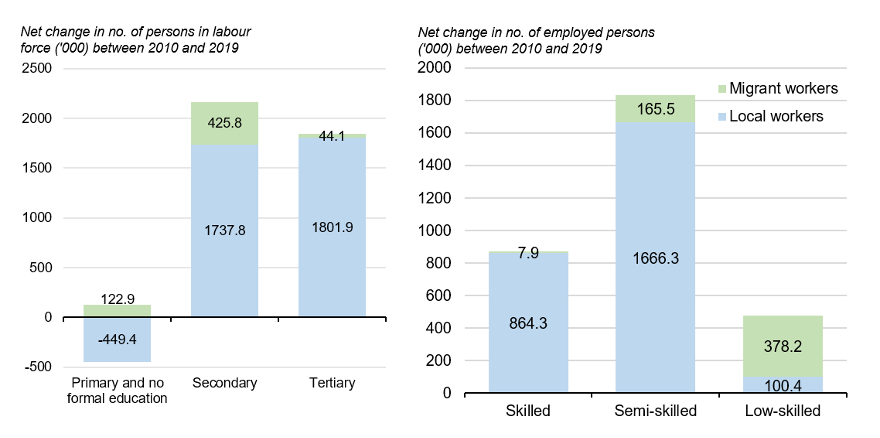
Figure 3: Migrant and local workers occupy different occupational space. Between 2010 and 2019, migrant workers mostly went into low-skilled occupations due to their lower education background. DOSM (2011); DOSM (2015); DOSM (2020) and author’s calculation.
In other words, given their distinct education profile, migrant and local workers generally do not do the same jobs. Lower-educated, low-skilled migrant workers often take on jobs that are deemed dirty, dangerous and difficult (3D), which are also jobs that Malaysians usually shun. Indeed, based on a survey conducted by the Malaysian Employers Federation (MEF) involving 101 member companies, around 78% of the companies reported that the main reason for them to recruit migrant workers was the “shortage of local workers to fill vacancies”. Although the survey was not nationally representative, it gives a broad sense of the struggle that firms face in hiring local workers.
Hence, in requiring employers to hire only local workers post-lockdown, the government may be putting employers in a very challenging position. For example, following the government’s directive to stop hiring migrant workers, market traders at the wholesale and wet markets have found it hard to hire. The jobs that migrant workers do are often too demanding for the locals, that it now takes two locals to handle one migrant worker’s workload. As such, the market has been functioning at less than 20% of its full capacity due to the manpower disruption.
Encouragingly, upon the request by some employers for the government to lift the freeze on the employment of migrant workers, the government in its latest announcement has given the flexibility to employers to hire migrant workers who were previously laid off. Although it is unclear whether this flexibility applies to the manufacturing and services sectors as well—as opposed to the announcement mentioned earlier—it is a move in the right direction. After all, migrant and local workers have been occupying different occupational space. Expecting this to change overnight, even amidst a global economic crisis, is unrealistic.
The march towards automation – Laying the right foundation
Last but not least, the pathway to a successful structural transformation of the economy that will benefit all Malaysians does not depend solely on reducing Malaysia’s reliance on migrant workers.
Although there has been a wealth of economic research on the short-term impact of immigration on the employment and wages of locals, its long-term effects on Malaysia’s choice of production technology and the growth potential of its economy remain under-investigated. There is the view that the current low-cost labour-intensive production strategies—made possible by the relative abundance of migrant workers—may actually be slowing down Malaysia’s adoption of the latest form of modern technology. If found to be true, this has significant implications on Malaysia’s ability to sustain its economic development and eventually transition into an advanced economy.
Beyond doubt, this is a highly consequential research question. Yet it does not imply that removing migrant workers from the labour market would automatically promise a structural transformation of Malaysia’s economy that guarantees prosperity and employment security for all. First and foremost, it is naïve to assume that firms would simply upgrade their technology once low-skilled migrant workers are absent from the labour market. For one, labour-saving technologies are costly. The luxury of automation adoption or relocating production to an overseas location with low-cost labour is often exclusive to large firms only, while other firms go out of business. This is pertinent in light of the fact that 90% of the Malaysian manufacturing firms are considered small (i.e. 74 employees and less) (DOSM, 2017). It forces the question of how can Malaysia ensure these firms remain competitive in the face of global technological advancement so that the manufacturing sector can continue to be a reliable source of job creation?
From the workers’ perspectives, automation and new technology are bound to replace jobs, and it is Malaysians who are at the highest risk of job displacement, not migrant workers. Based on the findings by KRI (2017a), in the next two decades, 54% of all jobs in Malaysia could be displaced by technology. Four out of five of these high-risk jobs are semi-skilled jobs. Malaysians will be most affected because 86% of all semi-skilled jobs are held by Malaysians. In fact, the hollowing out of semi-skilled jobs by technology has already been evident since 2000 (Figure 4). The void is only expected to deepen further with the rapid progress in technology, more so if the government fully commits itself to the transformation of the country’s economic model moving forward.
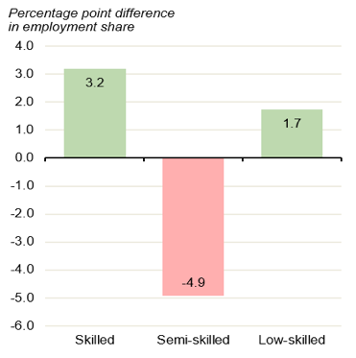
Figure 4: The disappearing middle. Unlike jobs on both ends of the spectrum, semi-skilled jobs experienced a dip between 201 and 2019. DOSM (n.d.) and author’s calculation.
Clearly, the road to economic transformation comes with its own set of labour and industrial challenges that will inevitably put Malaysians’ jobs at risk. Reducing Malaysia’s reliance on migrant workers could be an important policy lever to drive transformation, but it is the foundation of sound labour, industrial and education policies that will see a sustainable creation of quality jobs, and prepare all Malaysians for the rapidly evolving employment landscape. This may involve, amongst others, strengthening public-private interactions to better inform industrial policies to create an enabling environment for innovation, developing active labour market policies to continually re-train workforce, and reforming the education system to equip all Malaysians with relevant skills for the future. As far as employment security is concerned, the question is has Malaysia invested enough in building the foundation?
Conclusion – Becoming better, together
If there is anything that the pandemic has taught us so far, it is that we are all in this together, and only by caring for one another can we emerge from this crisis safely and strong. From this essay, it should be clear that neglecting migrant workers incurs significant economic externalities that will inevitably hurt local firms and workers, too. Furthermore, amplifying the urgency to reduce the reliance on migrant workers in a time like this will only distract the country from what needs to be fundamentally improved in order to transform Malaysia’s economy in the medium to long term.
Nonetheless, economic arguments should not be the only consideration when it comes to the way we treat others. Certainly, the population of migrant workers—whether documented or otherwise—who have contributed significantly to Malaysia’s economy are owed a duty of care. Malaysia should step up job protection for all migrant workers and strengthen regional cooperation to ensure migrant workers’ rights are protected regardless of where they are located. Above all, migrant workers should be granted full access to public healthcare without fear, instead of being pushed into hiding with the threat of detention. These should apply in any other countries that host migrant workers, because how we treat migrant workers will not only determine the fate of our societies, but also how our countries are remembered in the annals of history.
References
DOSM, 2011. Labour Force Survey Report 2010, Putrajaya: Department of Statistics Malaysia.
DOSM, 2015. Labour Force Survey Report 2015, Putrajaya: Department of Statistics Malaysia.
DOSM, 2017. Economic Census 2016: Manufacturing, Putrajaya: Department of Statistics Malaysia.
DOSM, 2020. Labour Force Survey Report 2019, Putrajaya: Department of Statistics Malaysia.
KRI, 2017a. The Times They Are A-Changin’: Technology, Employment, and the Malaysian Economy, Kuala Lumpur: Khazanah Research Institute.
KRI, 2017b. An Uneven Future? An Exploration of the Future of Work in Malaysia, Kuala Lumpur: Khazanah Research Institute.
MOHA, 2019. Statistik pekerja asing mengikut warganegara dan Sektor sehingga 30 Jun 2019, Putrajaya: Ministry of Home Affairs
MOHR, 2019. National Employment Returns (NER) 2018, Putrajaya: Ministry of Human Resources.
*This essay draws from the discussion in “Covid-19: We Must Protect Foreign Workers”, a discussion paper that explains the practicality of protecting migrant workers in Malaysia in length. The authors are grateful for the valuable comments by Allen Ng, Nazihah Mohamad Noor and Ryan Chua. All errors remain those of authors.
*The views expressed in the blog are those of the authors alone. They do not reflect the position of the Saw Swee Hock Southeast Asia Centre, nor that of the London School of Economics and Political Science.


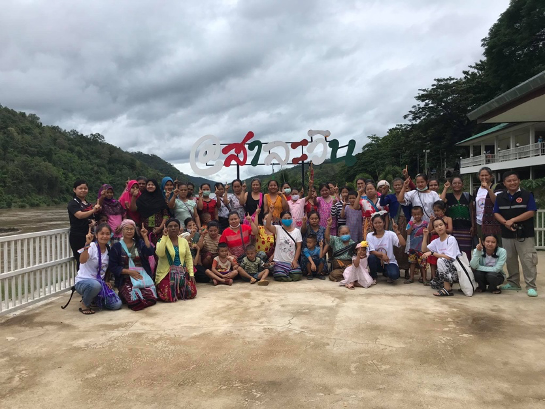
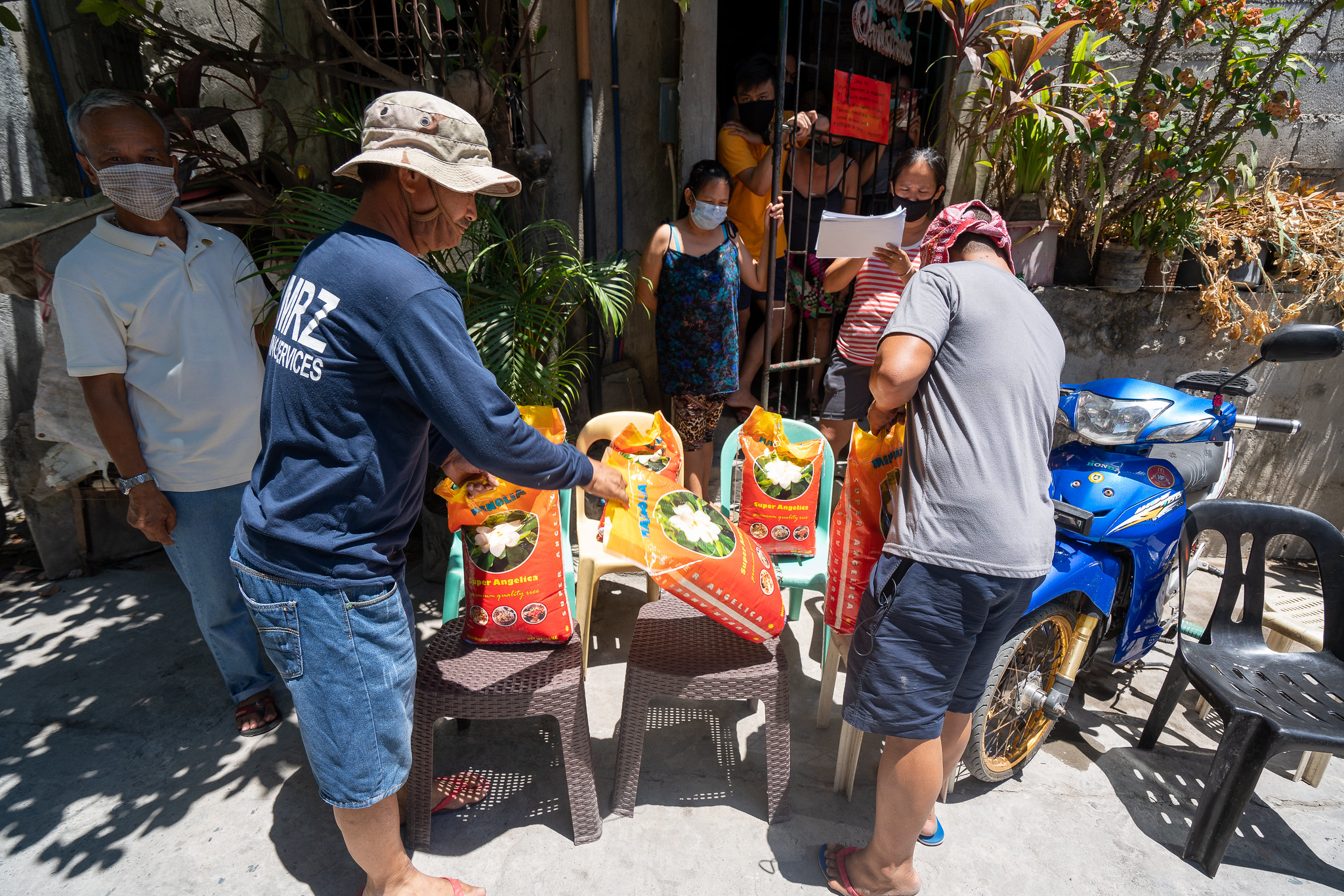


I can’t see why Malaysia is delaying the deployment of over 1m foreign workers in its various industries. Over the past 10 years or so, bribery and corruption have been rampant as highlighted by some foreign workers living in the country. As long as corruption is not eradicated by various ministries as as immigration, home affairs, labour and associated departments, the issues on importation of the workers will slow down the economy. If the country does not prefer to hire Bangladesh, India, myanmar etc workers, then China could easily supply 2m labour at a higher wages.